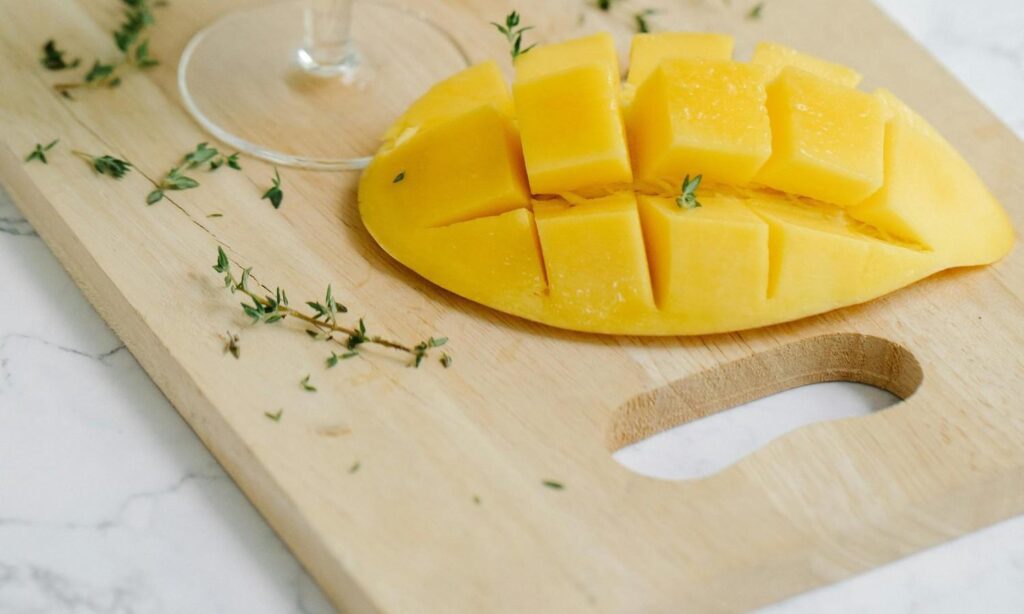Ten thousand years ago, in a Mexican cave, someone cracked open an avocado pit, perhaps marveling at its creamy flesh. That simple act in Coxcatlán Cave wasn’t just a snack—it was the start of a love affair that would span civilizations, continents, and cuisines. Today, we celebrate National Avocado Day on July 31, a nod to a fruit that’s gone from sacred Aztec ritual to Instagram’s darling. How did this humble “ahuacatl” become a global superfood icon? Let’s peel back the layers.
The Ancient Roots: Avocados in Mesoamerica
Avocados weren’t always topping toast. Their story begins in Mesoamerica, likely in south-central Mexico, where archaeological evidence dates their consumption to 10,000 BCE. In the Tehuacan Valley, early humans gathered wild avocados, their small, seedy fruits a far cry from today’s plump Hass. By 5,000 BCE, farmers began domesticating Persea americana, selecting for larger, tastier fruits. This wasn’t just food—it was survival.
The Aztecs revered avocados, calling them “ahuacatl,” a Nahuatl word meaning “testicle” due to their shape and paired growth. They saw the fruit as a symbol of strength and fertility, even believing it was an aphrodisiac. During harvest season, some villages kept young women indoors, wary of farmers’ “inflamed” desires. Avocados were so valued that Aztec nobles demanded them as tribute. Their creamy, nutrient-rich flesh was a dietary cornerstone, offering fats scarce in the Mesoamerican diet.
The Maya also cherished avocados. Their 14th-month glyph, K’ank’in, was an avocado, and carvings of avocado trees adorned King Pakal’s sarcophagus in Palenque. These cultures wove avocados into their spiritual and daily lives, seeing them as gifts from the gods. As anthropologist Dr. Maria Hernandez notes, “The Aztecs’ reverence for avocados highlights their understanding of nutrition and agriculture, long before modern science recognized its benefits.”
From Aztec Tables to European Shores
The avocado’s global journey began with Spanish conquistadors in the 16th century. When Hernán Cortés entered Tenochtitlán in 1519, he dined on ahuaca-mulli, an Aztec sauce of mashed avocados, tomatoes, and chiles—sound familiar? Spanish explorers, smitten by its buttery texture, called it “aguacate” and brought it to Europe. By 1696, English scientist Sir Hans Sloane documented the fruit as “avocado,” cementing its name in the English language.
Europeans were intrigued but slow to embrace the exotic fruit. Initially a luxury for the wealthy, avocados were prized for their novelty and supposed health benefits. Spanish and British sailors dubbed them “butter fruit” for their rich taste, a godsend on long voyages. By the 17th century, avocados had spread to the Caribbean, Southeast Asia, and beyond, adapting to tropical climates. Yet, their rise was gradual—avocados remained a curiosity, not a staple.
The American Dream: Avocados Take Root
Avocados arrived in the U.S. in the 19th century, finding a home in California and Florida. In 1833, horticulturist Henry Perrine planted them in Florida, but it was California’s climate that truly nurtured their growth. By 1871, Judge R.B. Ord introduced avocado trees to Santa Barbara, and by 1895, Montecito boasted a 120-tree plantation. The fruit, then called “alligator pear” for its bumpy skin, faced a branding problem. The Aztec name “ahuacatl” was hard to pronounce and, frankly, a bit awkward given its testicle connotation.
In 1915, California farmers tackled this head-on, forming the California Avocado Association and renaming the fruit “avocado.” They even lobbied dictionary publishers to ensure the plural was “avocados,” not “avocadoes.” A lucky break came in the 1920s when a California mailman, Rudolph Hass, accidentally bred the now-iconic Hass avocado. Its thick skin and rich flavor made it perfect for shipping, sparking a commercial boom. By the 2000s, U.S. avocado consumption had quadrupled, driven by Mexican cuisine’s rise and a growing obsession with healthy fats.
The Superfood Surge: Avocados Go Global
Fast forward to the 21st century, and avocados are a cultural juggernaut. Social media turned avocado toast into a millennial emblem, while guacamole became a Super Bowl staple. But why the frenzy? Avocados are packed with monounsaturated fats, fiber, potassium, and antioxidants, earning them “superfood” status. Studies link regular consumption to lower cholesterol and better heart health. In the U.S., annual avocado consumption now exceeds 2.6 billion pounds, with Mexico producing 17 pounds per capita.
Globally, avocados have infiltrated cuisines far beyond Mexico. In Japan, they’re sliced into sushi. In India, they’re blended into smoothies. In Amsterdam, there’s even an all-avocado restaurant. Their versatility—salads, ice cream, or just a sprinkle of salt—makes them a culinary chameleon. Yet, this global love affair isn’t without cost. Avocado farming is water-intensive, requiring up to 60 gallons per fruit, and rising demand has fueled deforestation in some regions. Sustainable practices,“Consumers can support local, organic growers to minimize environmental impact,” says UC anthropologist Amber VanDerwarker.
National Avocado Day: A Modern Celebration
National Avocado Day, celebrated on July 31, emerged in the 2010s as a marketing push by brands like Avocados From Mexico. It’s no coincidence that it aligns with peak avocado season in the U.S. The day celebrates the fruit’s journey and its role in modern diets. Restaurants offer free guacamole, influencers share recipes, and grocery stores roll out discounts. It’s a moment to reflect on how a Mesoamerican staple became a global icon.
But it’s more than marketing. Avocado Day taps into our emotional connection to food. For me, it’s the memory of my abuela mashing avocados in her molcajete, her hands steady as she told stories of her childhood in Oaxaca. That creamy ahuacamolli wasn’t just a dip—it was heritage. Today, when I slice an avocado, I feel that thread to the past, linking me to ancestors who saw this fruit as life itself.
The Cultural Cachet: Avocados as a Symbol
Avocados have always carried symbolic weight. To the Aztecs, they were love and fertility. Today, they’re health, indulgence, and even millennial excess—think memes blaming avocado toast for financial woes. This cultural shift fascinates me. A fruit once sacred is now a punchline, yet its allure persists. Posts on X capture this: “Avocados have been cultivated for over 5,000 years… today, they’re beloved worldwide for taste, nutrition, and heart health.”
This symbolism evolves with each generation. In Mexico, guacamole variations—like Oaxaca’s with fried grasshoppers—reflect regional pride. In the U.S., avocado toast is both a breakfast staple and a cultural lightning rod. The fruit’s ability to straddle tradition and trendiness is its magic. It’s a bridge between ancient rituals and modern wellness, between my abuela’s kitchen and a trendy café.
Challenges and Controversies
The avocado’s rise isn’t all smooth. Its water-intensive cultivation strains resources in places like Chile and Mexico. In Michoacán, Mexico’s avocado heartland, organized crime has infiltrated production, creating human rights concerns. Price spikes also make avocados a luxury in some markets, sparking debates about accessibility. These issues remind us that our love for avocados has a footprint.
Yet, solutions are emerging. Sustainable farming practices, like those in California’s organic groves, reduce environmental impact. Consumers can choose avocados from ethical sources, supporting farmers who prioritize eco-friendly methods. It’s a small step, but as avocado lovers, we hold power in our choices.
A Personal Connection
I remember my first avocado toast, a revelation at a small Brooklyn café. The creamy green spread, flecked with sea salt, felt like a hug from history. Knowing that Aztecs mashed similar ingredients centuries ago made each bite feel timeless. National Avocado Day is a chance to honor that connection—to celebrate a fruit that’s nourished bodies and souls for millennia. Whether it’s guacamole at a family gathering or a smoothie on a busy morning, avocados carry stories.
What’s your avocado story? Maybe it’s a recipe passed down or a moment of discovery. Share it, savor it, and let’s keep this ancient fruit’s legacy alive. Next time you slice into an avocado, think of those early farmers in Mexico, tending trees that would feed the world. Their leap of faith gave us a superfood, a symbol, and a reason to celebrate.










